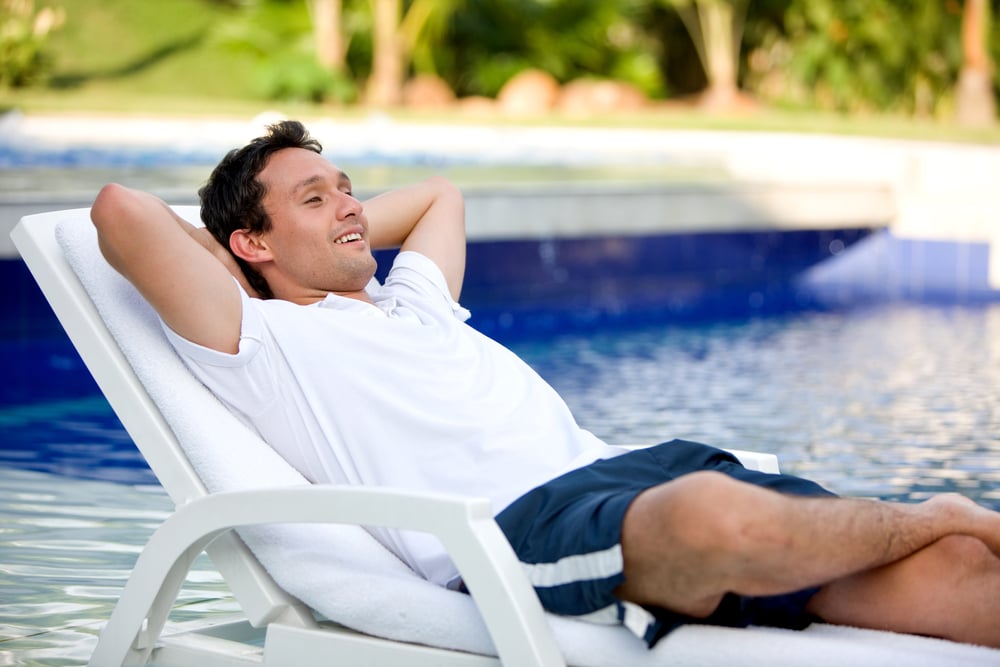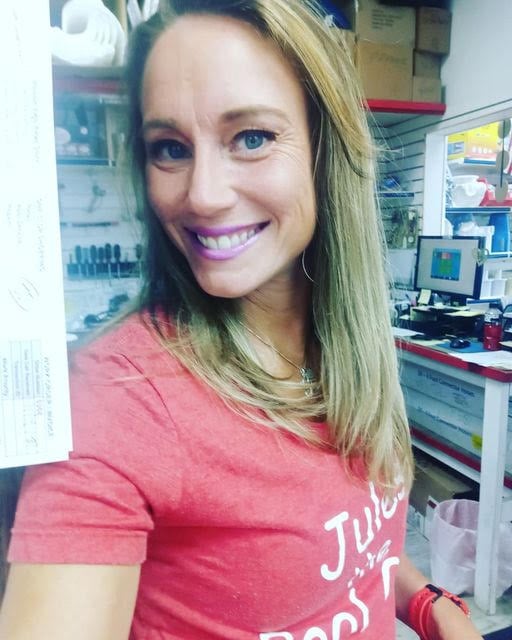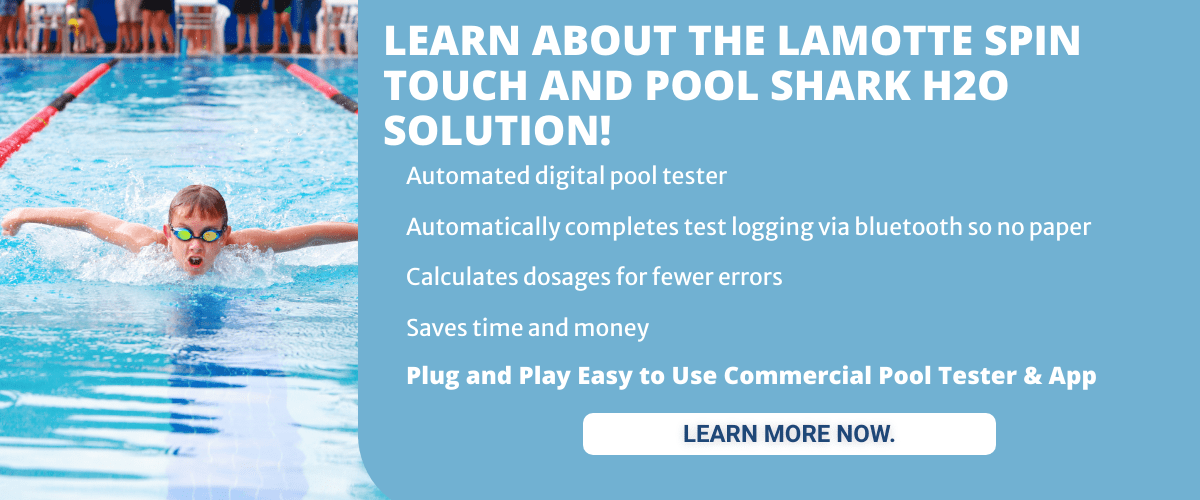
Conditioner. Stabilizer. These are other names for a chemical called Cyanuric Acid. What is it? Do we need it? What are the ups and downs? Let’s talk CYA.
What is Cyanuric Acid?
Cyanuric acid is a chemical that when in the proper range, can become a critical part of your pool maintenance. CYA protects unstabilized chlorine from burning off in a matter of hours under the sun’s harsh ultraviolet rays. It comes in both a liquid, or instant, form, as well as a powder, or granular. There are also several forms of stabilized chlorine that contain cyanuric acid. Sodium Dichlor and trichlor are the main two. Sodium dichlor is traditionally used in special vessels such as vinyl-lined pools, spas, and fountains. Trichlor can be an excellent algae fighter. You most commonly know it when it comes in tablet form. Trichlor tablets come in 1” and 3” sizes.
Think of Cyanuric Acid as a sunscreen for your chlorine. The recommended range for CYA in a chlorine swimming pool is 30-50ppm. In a salt pool, the range is 50-60 ppm. The reason it is higher in salt swimming pools is that we don’t get the weekly addition that our trichlor tablets add in traditionally chlorinated pools.
How to Add Cyanuric Acid to Your Pool
Always follow your chemical’s dosing instructions carefully and always wear the proper PPE (Personal Protective Equipment). Both liquid and granular chlorine are typically administered through the skimmer, where it dissolves in the filter. The liquid dissolves to its final range typically in 24 hours. Granular can take 5-7 days to completely dissolve and give you an accurate reading.
It is always important to test your swimming pool’s water before adding any chemicals. Too much, or too little, cyanuric acid determines the effectiveness of your sanitizer. There are several ways to test for CYA levels. You can use test strips, a CYA reagent kit or my favorite, a Lamotte Spin Disc. If using a manual method, be sure to enter the number into your Pool Shark H2O App for accurate dosing. If you have paired your Pool Shark H2O App with the Lamotte Spin Disc system, the results are immediately sent to your device! Saving time and being accurate are my favorite!
Too Little Cyanuric Acid in Your Pool
As we talked about above, too little cyanuric acid means you are not holding on to your desired sanitizer levels. This could mean your chlorine could drop too low. When our chlorine is too low our swimming pool is not safe for our bathers. It can also lead to cloudy water and algae. If the health department comes and your chlorine levels are not in range, they won’t think twice about shutting your swimming pool down until it is. This can cost your facility money. Adding additional chlorine to “keep up” with our desired levels in a pool without enough stabilizer is also not cost-effective. We are just wasting product and time. This Russian Roulette of pool care, hoping to land in the perfect range is not advised for any pool operator.
Too High Cyanuric Acid in a Pool
This is a controversial subject, with many opinions out there. Some states like New York don’t even allow CYA! Cyanuric acid does not evaporate. The only means to lower CYA are by dilution or splash out. There are some products out there that boast the ability to lower stabilizer in swimming pools, but the first 2 are 100% proven and effective. When our conditioner exceeds 100-150ppm, it actually has an adverse effect on our chlorine. More is not better when it comes to conditioner. When the levels get too high, it renders our chlorine less effective. To what degree is not an exact science. In a nutshell, you would have to keep your chlorine levels higher to have the same effectiveness. Guess what else will get your swimming pool shut down? Yup. Too high of a chlorine reading.
We are playing with fire with high levels of CYA in your pool. With less effective chlorine, we are putting our bathers at risk. Swimmer safety should always be our number one priority. High cyanuric acid levels especially come into play this time of year if we use “pucks” that contain cyanuric acid. Unless you are using a Calhypo tablet, you are constantly adding more and more cyanuric acid to your swimming pool water. The more tablets you float, the quicker you will see that number rise.
This is why it is uber important to test for cyanuric acid levels to see if a partial drain is needed to keep the water safe. When your chlorine is less effective due to high CYA levels you can experience the same symptoms of chlorine being too low. You have unsafe water. The water can become murky or cloudy. You can develop algae which can be costly to get rid of. Luckily, the Pool Shark H2O App has a cyanuric acid field to help you balance this, and other, crucial chemicals.
More Commercial Pool Chemistry Resources
Free, vs Combined vs Total Chlorine - A Guide for Commercial or Public Pool Operators
Chlorine Shock vs Non-Chlorine Swimming Pool Shock
Why Being Able to Calculate the Volume of a Commercial or Public Swimming Pool is Important
Ideal Alkalinity in Commercial Pools
Managing pH and Alkalinity in Pools
Commercial Pool Chlorine Management
Cyanuric Acid in Your Pool Too High? How to Remove Cyanuric Acid (Lower Pool Stabilizer)
Lowering Alkalinity in Swimming Pools
Reasons Your Public or Commercial Pool Water Could Be Cloudy
Muriatic Acid in Swimming Pools
How to Lower pH in Pools, Water Parks and Water Features
Does Chlorine Kill Poop in a Swimming Pool?
Total Dissolved Solids: When Should I Drain My Pool?
Why Pool Chemical Storage Cabinets are Important for Commercial Pools
Storing Pool Chemicals: What Commercial Pool Operators Need to Know



